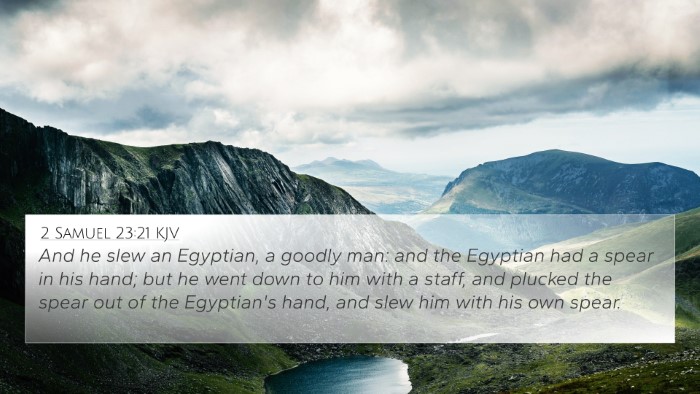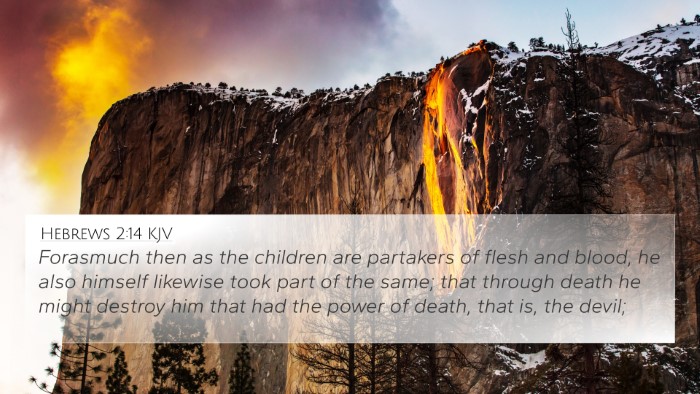Understanding 1 Samuel 17:51
1 Samuel 17:51 reads: "Therefore David ran, and stood upon the Philistine, and took his sword, and drew it out of the sheath thereof, and slew him, and cut off his head therewith. And when the Philistines saw their champion was dead, they fled." This verse serves as a vivid recounting of David's victory over Goliath, encapsulating themes of faith, divine intervention, and the triumph of the underdog.
Context of the Verse
The victory narrative found in 1 Samuel 17 reflects Israel's ongoing conflict with the Philistines. Goliath, a giant warrior, had desecrated the Israelite camp by taunting and challenging their warriors. David, a shepherd boy, emboldened by faith in God, volunteered to fight him, leading to this climactic moment where he defeats the giant.
Theological Insights
- Divine Empowerment: Commentaries such as Matthew Henry’s Commentary suggest that David's victory represents God empowering the unlikely. This act ensures that the glory of the victory belongs not to human strength but to divine might.
- Symbol of Christ: Albert Barnes notes that David's act of defeating Goliath foreshadows the ultimate victory of Christ over sin and evil, thus establishing a thematic link between David and Jesus.
- Fear and Courage: Adam Clarke emphasizes the contrast between the fear of Saul's army and David's courage, highlighting how faith can inspire action in the face of overwhelming odds.F
Cross-References to Consider
- 1 Samuel 16:13 - David is anointed, marking his divine selection as king.
- Psalm 144:1 - A poetic reflection on God training David for battle.
- 2 Samuel 21:19 - Another account of Goliath's lineage and the continued battle against the Philistines.
- 1 Corinthians 1:27 - God chooses the weak to confound the strong, analogous to David's victory.
- Hebrews 11:32-34 - The faith of David and others who conquered kingdoms through divine faith.
- John 16:33 - Jesus assures victory over the world echoing David’s triumph.
- Romans 8:31 - A rhetorical question affirming that if God is for us, who can be against us?
Comparative Bible Verse Analysis
This passage links to various other themes throughout both testaments. The motif of God using the weak to shame the strong recurs and serves as a foundational principle in scriptural narratives. In studying these themes, the process of cross-referencing Biblical texts allows for deeper insights into God's sovereign plan.
Inter-Biblical Dialogue
When one examines the connections between Bible verses, such as the heroic exploits of David and the New Testament parallels with Christ, it creates a rich tapestry of understanding that transcends time. This dialogue between testaments showcases God's consistent nature and the unfolding of redemptive history.
Tools for Bible Cross-Referencing
- A comprehensive Bible concordance can help identify similar themes and words across scriptures.
- Utilizing a cross-reference Bible study guide aids in discovering related verses that enhance understanding.
- Engagement with a Bible cross-reference system helps in systematically studying scriptural relationships.
Conclusion
1 Samuel 17:51 captures a moment of faith and divine intervention, serving not only as a historical account but as an enduring lesson on trust in God. By examining this passage through the lenses of various commentaries, one gains a multifaceted perspective on the nature of God’s triumph through the unlikely victor, David. This encourages believers to reflect upon their own challenges and the power of faith in overcoming them.








